
Photo by Jakub Żerdzicki / Unsplash
Proportional Tax
Introduction
Tax is a compulsory payment imposed by governments on individuals and firms to meet their expenditures. Tax is the main source of revenue for many governments. Tax is an important tool used by governments in implementing the fiscal policy.
Their main purpose of taxation is to raise funds for government spending. Governments need funds to meet their expenses on various things, including government services (emergency, fire brigade, police, etc.), infrastructure, administration, welfare benefits, and public goods.
In this article, we shall discuss proportional tax in detail.
What is a Proportional Tax?
A proportional tax is a type of tax in which the tax rate remains constant and does not change with the increase in income of the taxpayer.
In a proportional tax system, all individuals pay the same tax rate, regardless of their income level. The means that the average tax rate and the marginal tax rate will remain the same.
However, the amount of tax will increase with the increase in the income of tax payers.
Proportional Tax Example
A sales tax in any country can be an example of a proportional tax. If the sales tax is 7%, all individuals will pay the tax at 7%, irrespective of their income.
Graphs of Proportional Tax
Let's illustrate the concept of proportional tax with the following graphs:
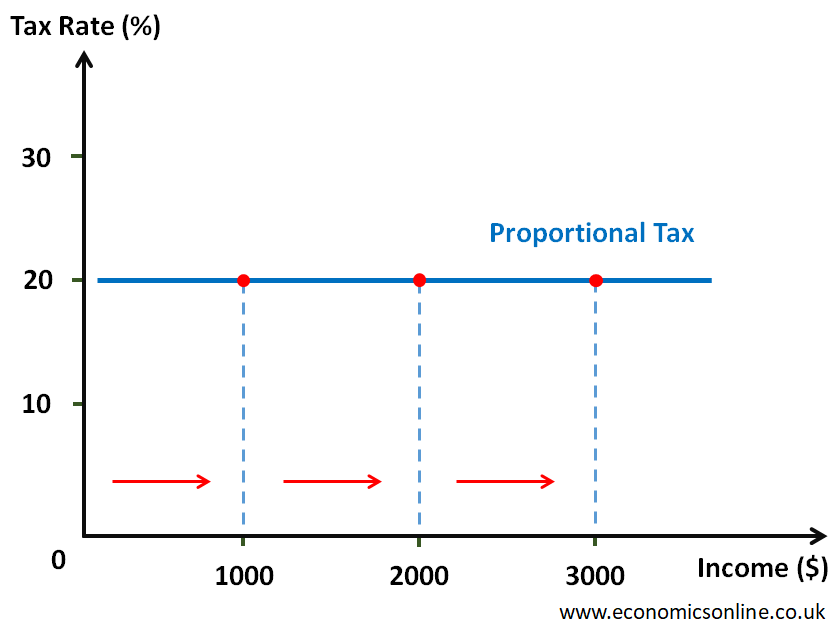
In the above graph, the income of the tax payer is taken on the horizontal axis (X-axis), and the tax rate is taken on the vertical axis (Y-axis). The proportional tax is represented by a straight horizontal line at a constant tax rate of 20%. Individuals with different incomes will pay the same rate of tax, which is 20%.
Let’s now consider another graph of proportional tax by taking the amount of tax on the vertical axis instead of the tax rate.
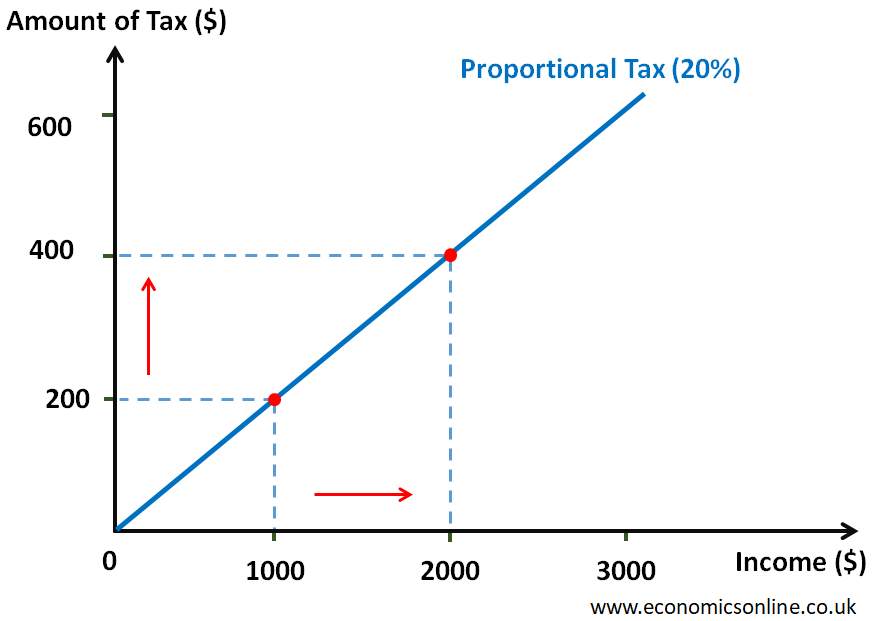
In proportional tax, the tax rate remains constant, yet people pay different amounts of tax based on their income level. At 20% proportional income tax, an individual with an income of $1000 will pay $200 as tax, while an individual with an income of $2000 will pay $400 as tax. This is illustrated by the above graph.
The following table also illustrates the same concept.
|
Proportional Tax |
||
|
Income ($) |
Amount of Tax ($) |
Tax Rate (%) |
|
1000 |
200 |
20 |
|
2000 |
400 |
20 |
|
3000 |
600 |
20 |
Advantages of Proportional Taxes
The following are the advantages of proportional tax:
Simplicity
It's simple to understand and easy to implement a proportional tax for different income levels.
Fairness
The proportional tax is considered a fair tax system for both high-income earners and low-income earners because they pay tax at the same flat rate
Transparency
The tax rate is fixed for every individual, providing transparency to taxpayers for paying tax amounts.
Incentives for Growth
Higher-income earners are not discouraged from growing more. It provides incentives for growth for both high-income and low-income individuals.
Economic Stability
It promotes economic stability by providing fruitful revenue in the form of tax amounts to the government.
Encourage Investment
It also encourages individuals to invest in different businesses and grow their income.
Encourage Entrepreneurship
Proportional tax allows entrepreneurs to start a business in a country because it has fixed tax rates to pay.
Disadvantages of Proportional Taxes
The following are the major disadvantages of proportional tax:
Burden on the Poor
This imposes a high tax burden on lower-wage earners because of its rigid nature. The tax rate is fixed by proportional tax, so every individual must pay this tax amount, whatever the condition of their income.
Lack of Progressivity
The proportional tax system does not consider the income imbalance; hence, it is unfair for low-income individuals to pay the same tax rates as high-income individuals.
Impact on Disposal Income
A large portion of the income of lower-income earners may be paid as tax. So these individuals are not able to compensate for their basic needs.
Inequality
Some people criticise the proportional tax because it creates inequality by taking the same tax rate from low-income individuals as they take from high-income people. This creates inequality in some contexts.
Regressiveness
A proportional tax is also considered regressive because it imposes the same tax rate on low-income individuals as it does on high-income individuals. In other words, the same tax rate may put a higher burden of tax on the poor. According to the concept of diminishing marginal utility, money has a higher marginal utility for the poor than the rich. Charging tax at the same rate means a higher burden of tax on the poor because they are paying tax with money having a higher marginal utility. This means a higher burden of tax on the poor making it regressive.
Other Types of Tax
There are different types of taxes and a few of them are explained below.
Progressive Tax
Progressive tax is type of tax in which tax rate increases with an increase in income of tax payer.
Th progressive tax system is more common because it reduces income inequality by putting a higher burden of tax on individuals with higher incomes.
An example of progressive tax can be the income tax in many countries including the United States, in which tax rate increases with an increase in the income of individuals and they enter into higher tax brackets when their income increases.
Regressive Tax
Regressive tax is a type of tax in which tax rate decreases with an increase in income of tax payer. The average tax rate decreases with an increase in the income of the taxpayer.
A fixed amount of sales tax (say $5) is an example of a regressive tax.
Comparison
The following table and graphs show comparison of progressive, regressive and proportional tax systems.
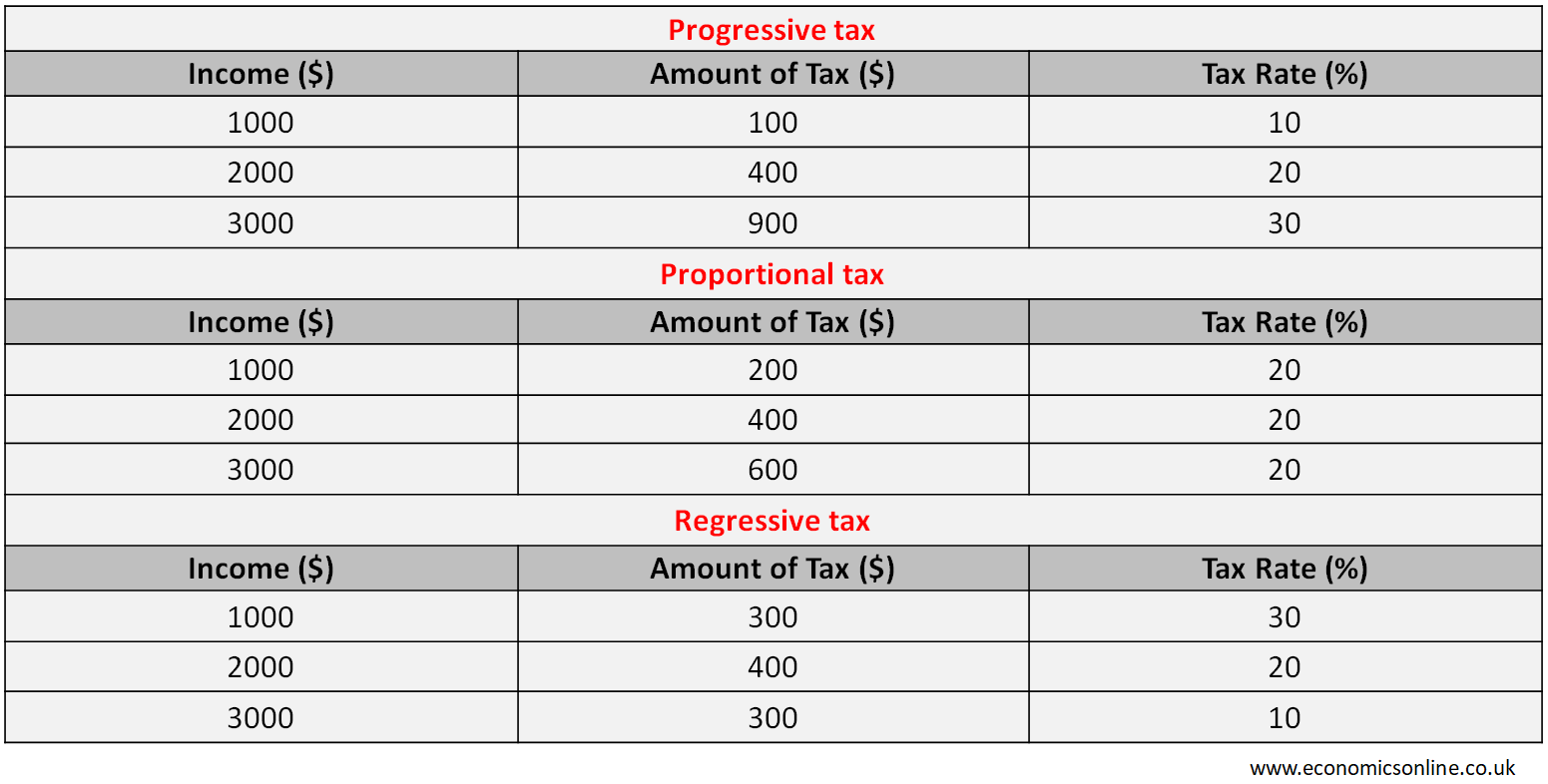
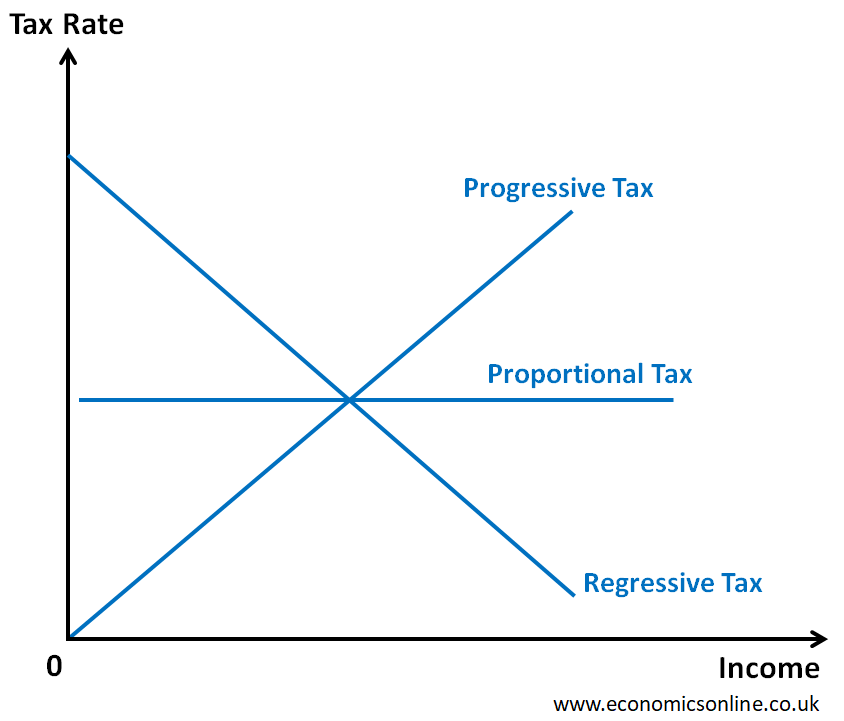
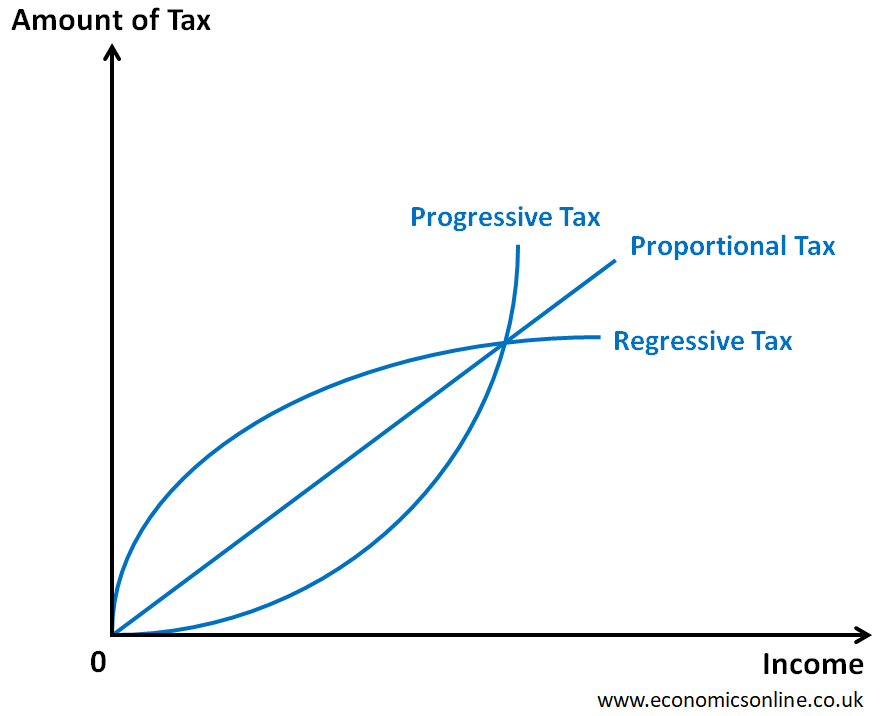
Conclusion
In conclusion, a proportional tax is a type of tax in which the tax rates remain the same for each level of taxable income. The proportional taxation is considered as fair and flat tax system, but it also encourages inequality in a country, to some extent. Its major disadvantage is the lack of progressivity.


